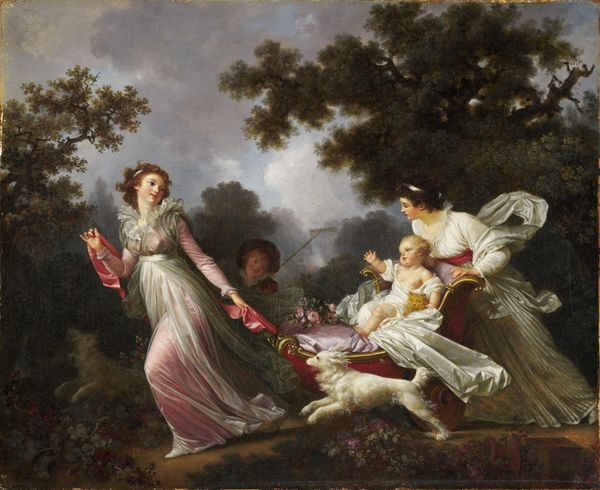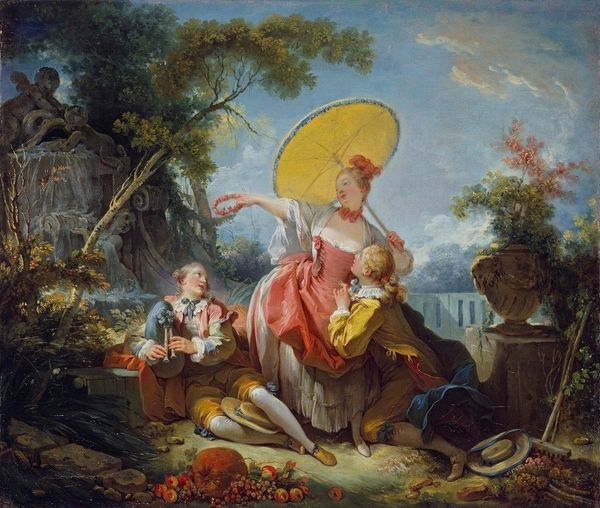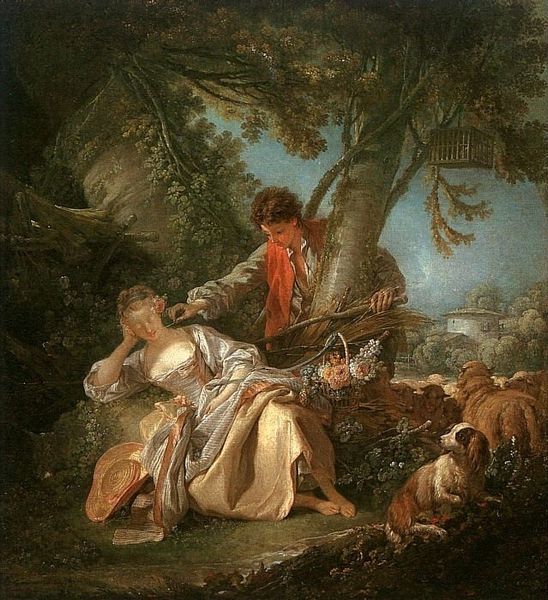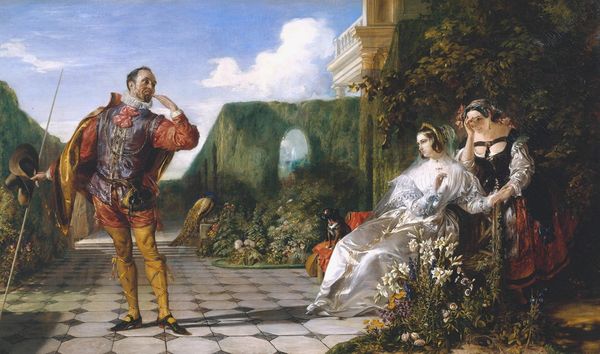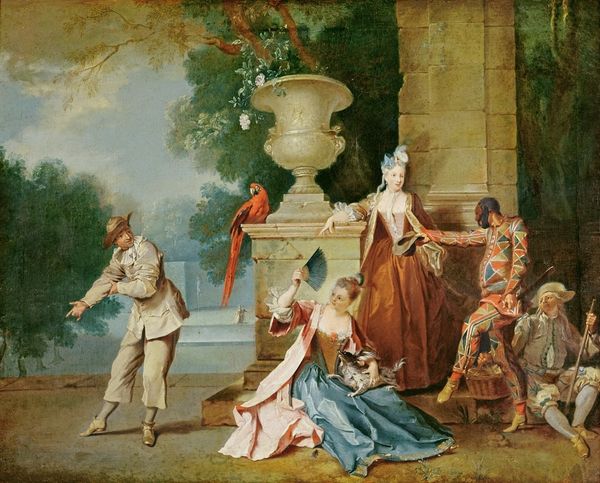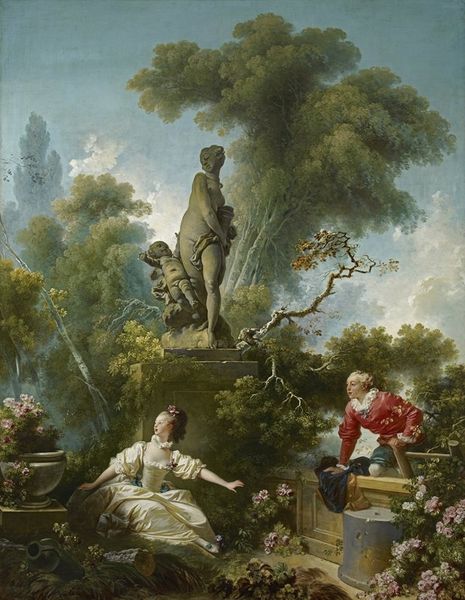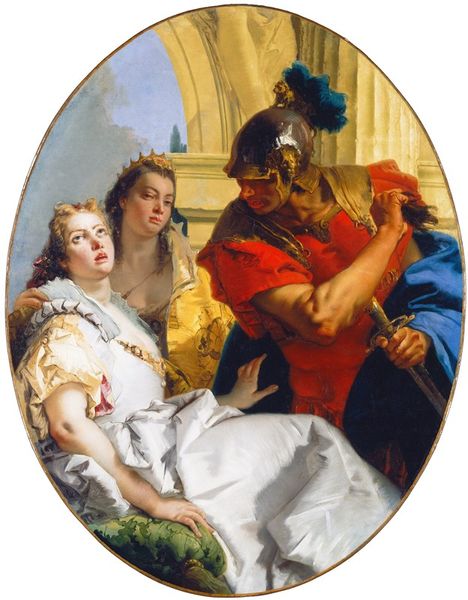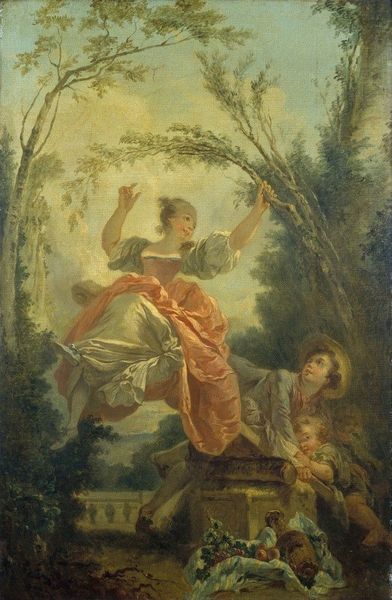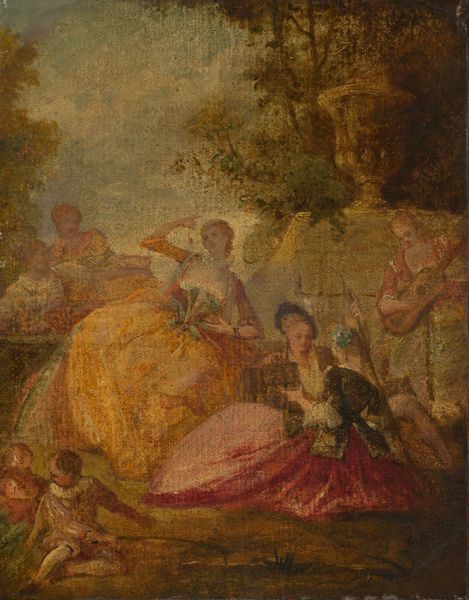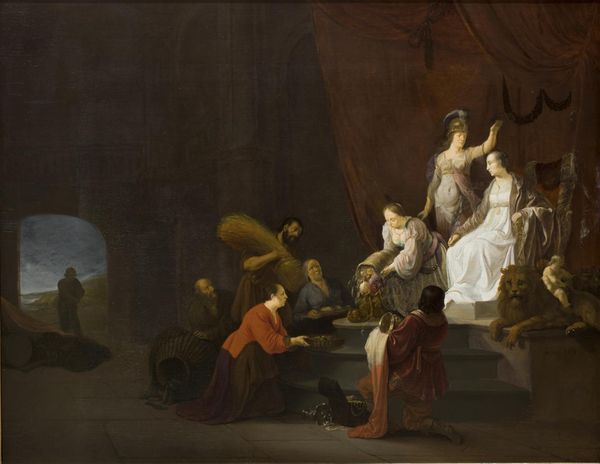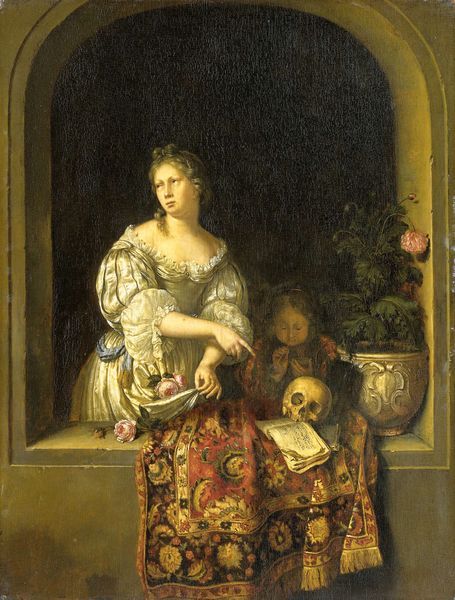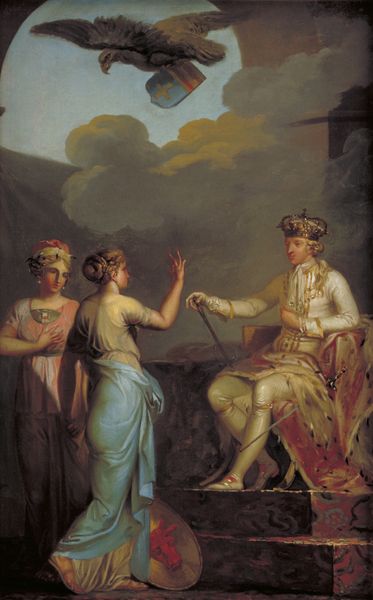
Copyright: Public domain
Editor: So, this is *La carta*, or *The Letter*, by Luis Paret y Alcázar, painted in 1772. It's an oil painting, and it strikes me as staged somehow, a very artificial, decorative scene. What's your take? Curator: I see it as a prime example of how Rococo art served specific social functions. Paret’s piece isn’t just pretty; it's about the performance of social status and leisure. Consider the idealized setting. Does that reflect reality, or project a desired image? Editor: It definitely feels more like a fantasy. All the decorative details – the dress, the flowers, the elaborate chair – seem designed to showcase wealth. Do you think there's a hidden commentary on the aristocracy here? Curator: It's less about explicit commentary, more about celebrating the lifestyle *while* subtly reinforcing social norms. These images presented a certain way of being, influencing aspirations and reinforcing power dynamics. Who had access to these artworks and what values did these pieces reinforce? Editor: I never thought about it that way before. It’s easy to get caught up in the beauty and miss the social agenda underneath. This wasn't art for everyone to enjoy or critique freely. Curator: Exactly! Consider how access to education, patronage, and even leisure activities depicted here were largely restricted. Art became a tool to create distinction. Editor: Thinking about it now, seeing this displayed in a museum adds another layer of context. Curator: Indeed, our own choices about display and interpretation actively contribute to its ongoing historical journey. Editor: Well, I will never see these kinds of pieces in the same way again. Thanks! Curator: My pleasure. Looking at the historical role helps to deepen our appreciation.
Comments
No comments
Be the first to comment and join the conversation on the ultimate creative platform.

